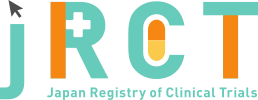臨床研究等提出・公開システム
|
Mar. 30, 2020 |
|
|
May. 29, 2024 |
|
|
jRCT2080225147 |
A Phase 3, Randomized, Clinical Study in HIV-1-Infected Heavily Treatment-Experienced Participants Evaluating the Antiretroviral Activity of Blinded Islatravir (ISL), Doravirine (DOR), and Doravirine/Islatravir (DOR/ISL), Each Compared to Placebo, and the Antiretroviral Activity, Safety, and Tolerability of Open-Label DOR/ISL |
|
DOR/ISL in heavily treatment-experienced participants |
|
Nov. 21, 2022 |
|
35 |
|
Of the 35 participants randomized in this study, a mean age was 48.5 years, 77.1% were male and 22.9% were female. Overall, 57.1% of participants were White, 31.4% were Black or African American, and 5.7% were Asian. |
|
Seven participants were randomized to Arm 1 (Islatravir [ISL] + ART), 14 participants to Arm 2 (Doravirine [DOR] + ART), 7 participants to Arm 3 (DOR/ISL + ART), and 7 participants to Arm 4 (placebo + ART). All participants received study intervention. At the data cutoff (21-Nov-2022), 7, 12, 4, and 7 participants in Arm 1 (ISL + ART), Arm 2 (DOR + ART), Arm 3 (DOR/ISL + ART), and Arm 4(placebo + ART), respectively, were ongoing in the study, and 2 participants in Arm 2 (DOR + ART) and 3 participants in Arm 3 (DOR/ISL + ART) discontinued from the study. |
|
Accumulated safety data through Week 49: - No participants died during the study. - Serious adverse events (SAEs) were reported for 14.3% (1/7) participant (COVID-19 pneumonia and SARS-CoV-2 sepsis) in Arm 1 (ISL + ART) and 7.1% (1/14) participant (postoperative wound infection) in Arm 2 (DOR + ART). - Non-serious adverse events (AEs) were reported for 71.4% (5/7) participants in Arm 1 (ISL + ART), 85.7% (12/14) participants in Arm 2 (DOR + ART), 85.7% (6/7) participants in Arm 3 (DOR/ISL + ART), and 85.7% (6/7) participants in Arm 4 (placebo + ART). AEs reported in >20% of participants in any group were diarrhoea (28.6%), COVID-19, creatinine renal clearance decreased, and lymphocyte count decreased (21.4% each), and these were reported in Arm 2 (DOR + ART). |
|
<Primary Endpoints> Efficacy: -A total of 35 participants were included in efficacy analysis population. -The percentage of participants with a >=0.5 log10 decrease in HIV-1 RNA from baseline (Day 1) to Day 8 was 28.6% in Arm 1 (ISL + ART), 78.6% in Arm 2 (DOR + ART), 85.7% in Arm 3 (DOR/ISL + ART), and 0% in Arm 4 (placebo + ART). Safety: -A total of 35 participants were included in safety analysis population. -The percentage of participants with one or more AEs up to Week 25 was 42.9% in Arm 1 (ISL + ART), 85.7% each in Arm 2 (DOR + ART), Arm 3 (DOR/ISL + ART), and Arm 4 (placebo + ART). Similarly, 71.4% in Arm 1 (ISL + ART) and 85.7% each in Arm 2 (DOR + ART), Arm 3 (DOR/ISL + ART) and Arm 4 (placebo + ART) experienced one or more AEs up to Week 49. -Overall, 7.1% of participants in Arm 2 (DOR + ART) and 14.3% of participants in Arm 3 (DOR/ISL + ART) discontinued study treatment due to AE(s) up to Week 25. Similarly, 14.3% of participants each in Arm 2 (DOR + ART) and Arm 3 (ISL/DOR + ART) discontinued study treatment due to AE(s)up to Week 49. |
|
Efficacy: In HIV-1-infected heavily treatment-experienced participants, addition of DOR/ISL (100 mg/0.75 mg) to a failing ART regimen may provide virologic benefit. In addition, DOR/ISL in combination with OBT may provide sustained HIV-1 suppression through 49 weeks of treatment. Safety: In HIV-1-infected heavily treatment-experienced participants, DOR/ISL + ART is generally well tolerated through 49 weeks of treatment. |
|
Yes |
|
http://engagezone.msd.com/doc/ProcedureAccessClinicalTrialData.pdf |
|
| version: date: |
Tanaka Yoshiyuki |
||
MSD K.K. |
||
KITANOMARU SQUARE,1-13-12,Kudan-kita,Chiyoda-ku,Tokyo 102-8667,Japan |
||
+81-3-6272-1957 |
||
JPCT@msd.com |
MSDJRCT inquiry mailbox |
||
MSD K.K. |
||
KITANOMARU SQUARE,1-13-12,Kudan-kita,Chiyoda-ku,Tokyo 102-8667,Japan |
||
+81-3-6272-1957 |
||
JPCT@msd.com |
completed |
May. 13, 2020 |
||
| 100 | ||
Interventional |
||
randomized controlled trial,double blind,placebo control,parallel assignment |
||
treatment purpose |
||
3 |
||
- Is HIV-1 positive. |
||
- Has HIV type 2 (HIV-2) infection. |
||
| 12age old over | ||
| No limit | ||
Both |
||
HIV-1 infection |
||
- Part1: Arm1 |
||
- To evaluate the antiretroviral activity of DOR/ISL compared to placebo, each given in combination with failing ART as assessed by the percentage of participants achieving >=0.5 log10 decrease in HIV 1 RNA from study baseline (Day 1) to Day 8 (Part 1). |
||
- To evaluate the antiretroviral activity of ISL and DOR, each compared to placebo, when each is given in combination with failing ART, as assessed by the percentage of participants achieving >=0.5 log10 decrease in HIV 1 RNA from study baseline (Day 1) to Day 8 (Part 1). |
||
| MSD K.K. | |
| Center Hospital of the National Center for Global Health and Medicine Clinical trial review committee | |
| 1-21-1 Toyama, Shinjuku-ku, Tokyo, Japan, 162-8655 | |
| approved | |
Mar. 26, 2020 |
| NCT04233216 | |
| ClinicalTrials.gov |
| JapicCTI-205243 | |
| Japan/Asia except Japan/North America/South America/Europe/Oceania/Africa |
